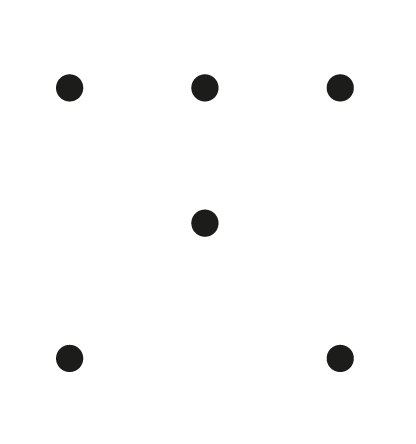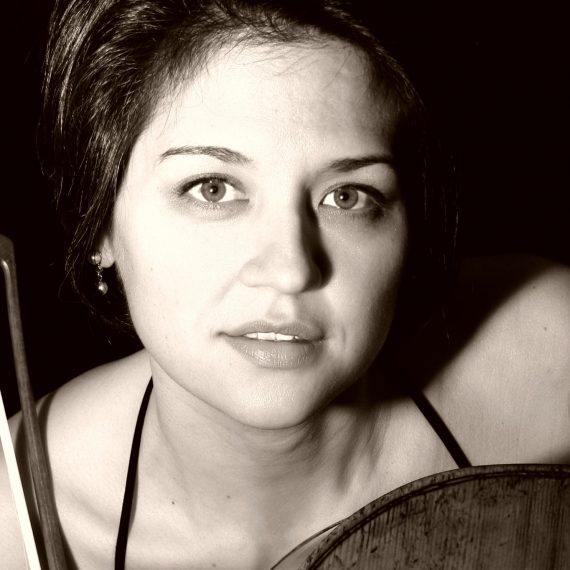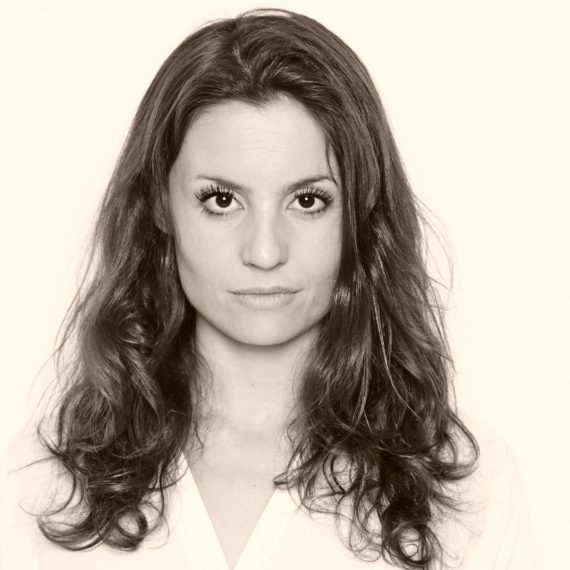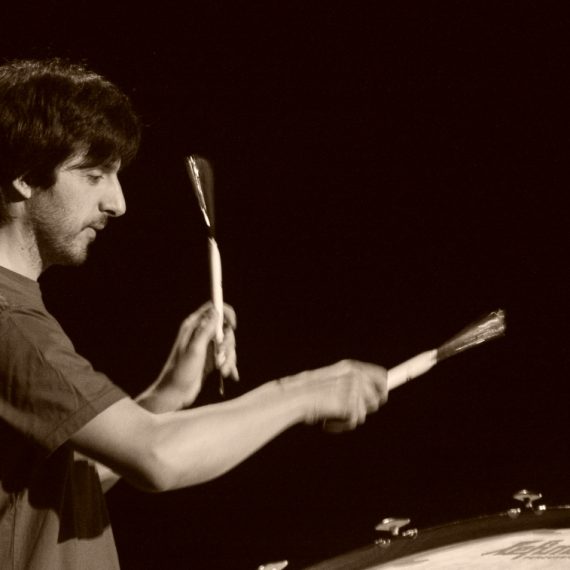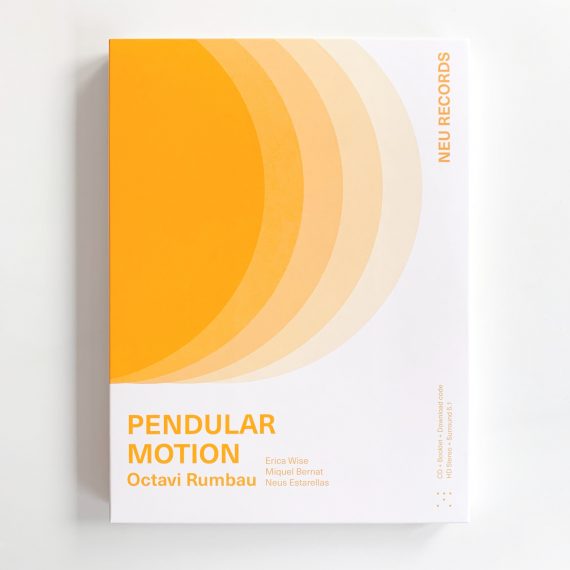PENDULAR MOTION
Octavi Rumbau
1. One Paradox 1.1 (2018)
for electronics — 11 min.
2-6. Five movements on pendulum motion (2019)
for cello and electronics — 31 min.
Erica Wise, cello
7. En suspensió (2019)
for percussion and electronics — 13 min.
Miquel Bernat, vibraphone and vibratones
8. One Paradox 2.0 (2019)
for piano and electronics — 8 min.
Neus Estarellas, piano
Total time — 62 min.
World Premiere Recording
Recorded in 3D format for sound installations (5.4.1), surround sound (5.1) and stereo (2.0)
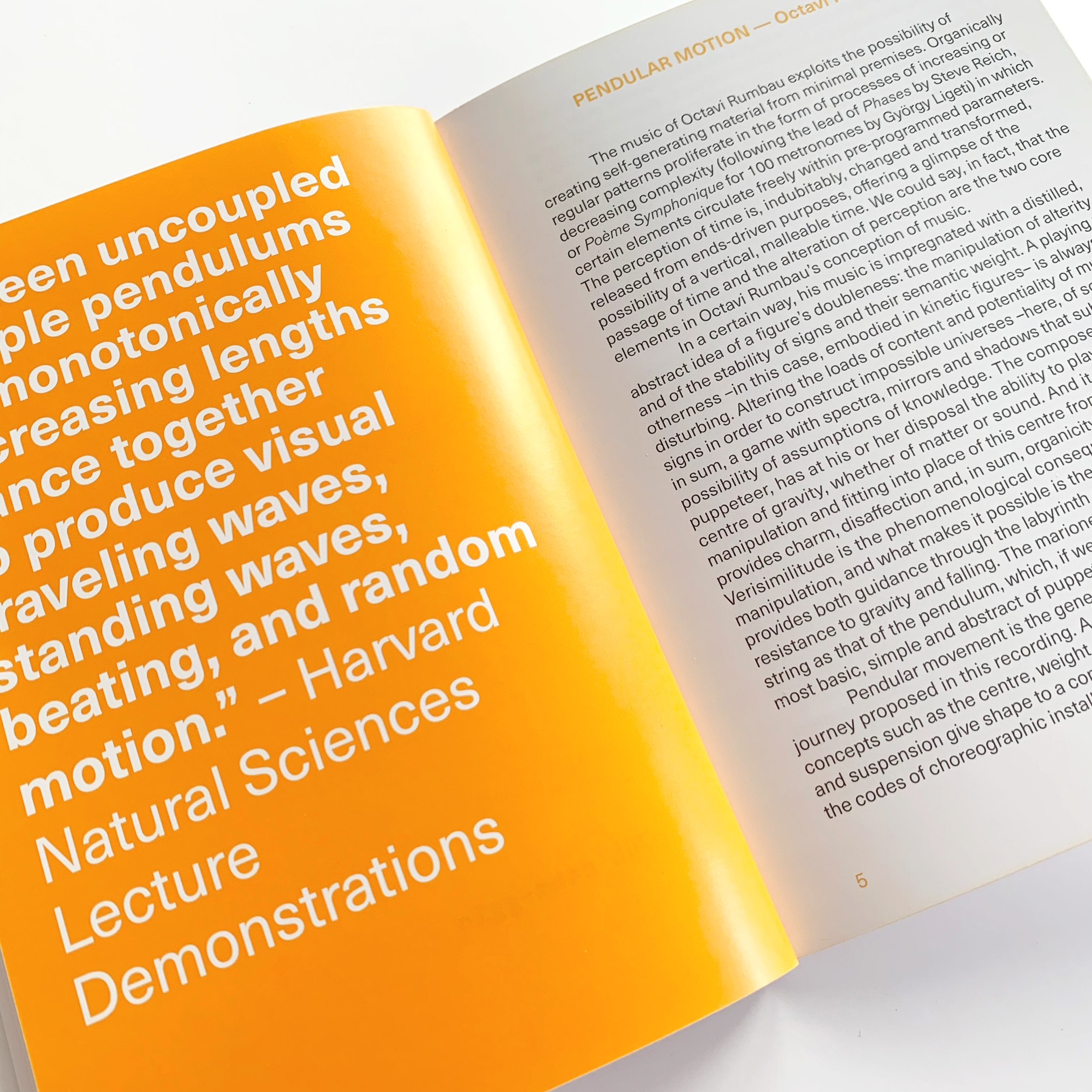
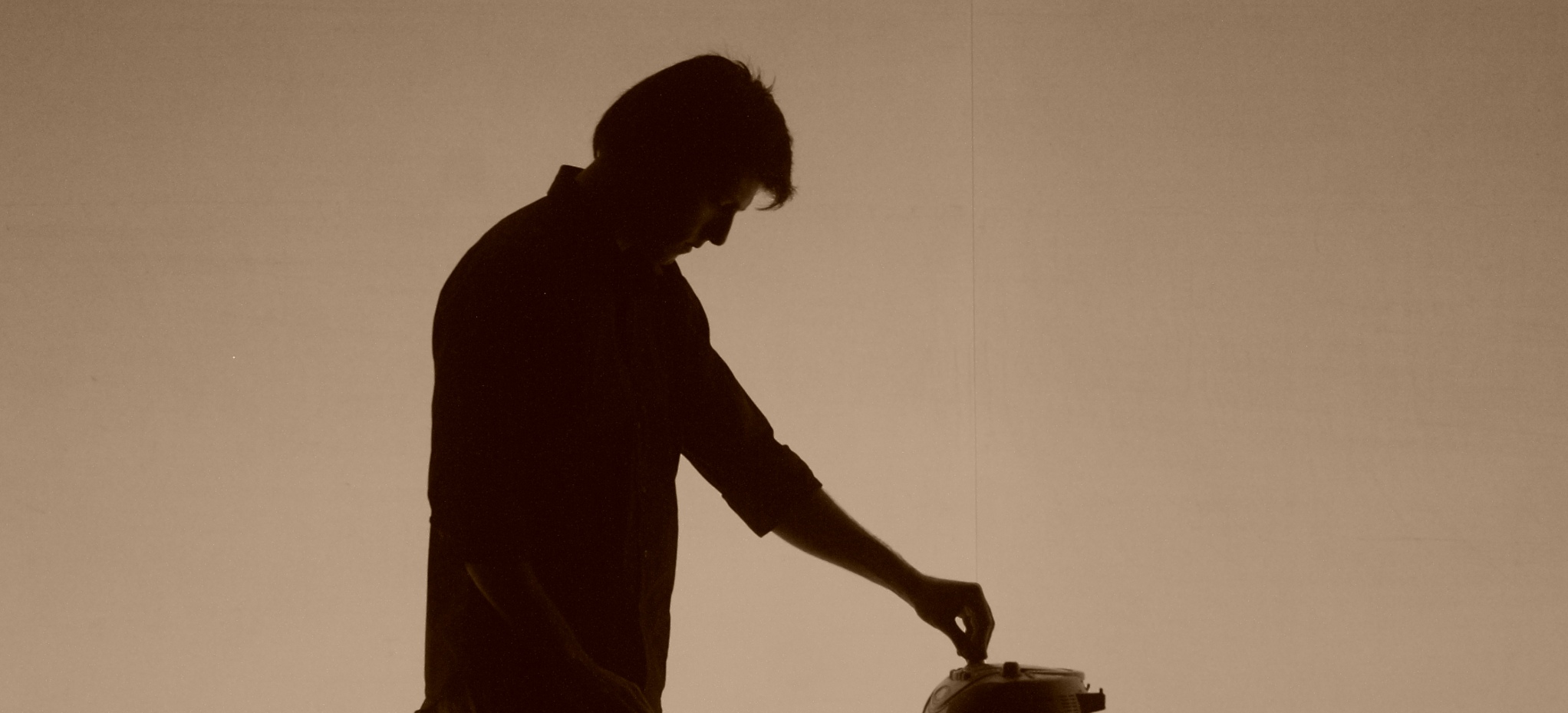
Miquel Bernat
BUY ALBUM
CD + Booklet — HD Digital format included — 21,90€
HD Digital — Stereo and Surround 5.1, 24bit 96kHz — 14€
Digital — Stereo, 16bit 48kHz — 10€
More info about formats here
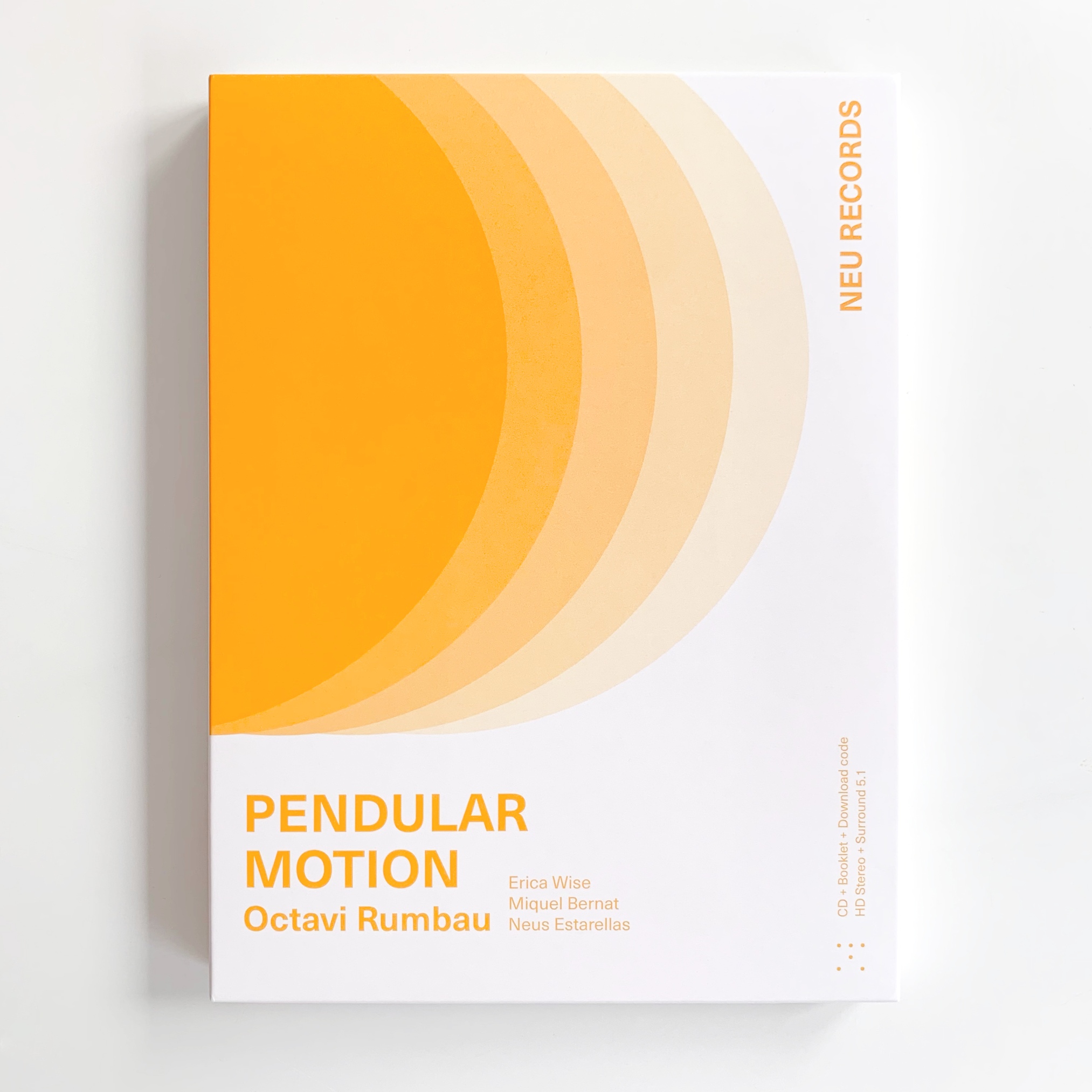
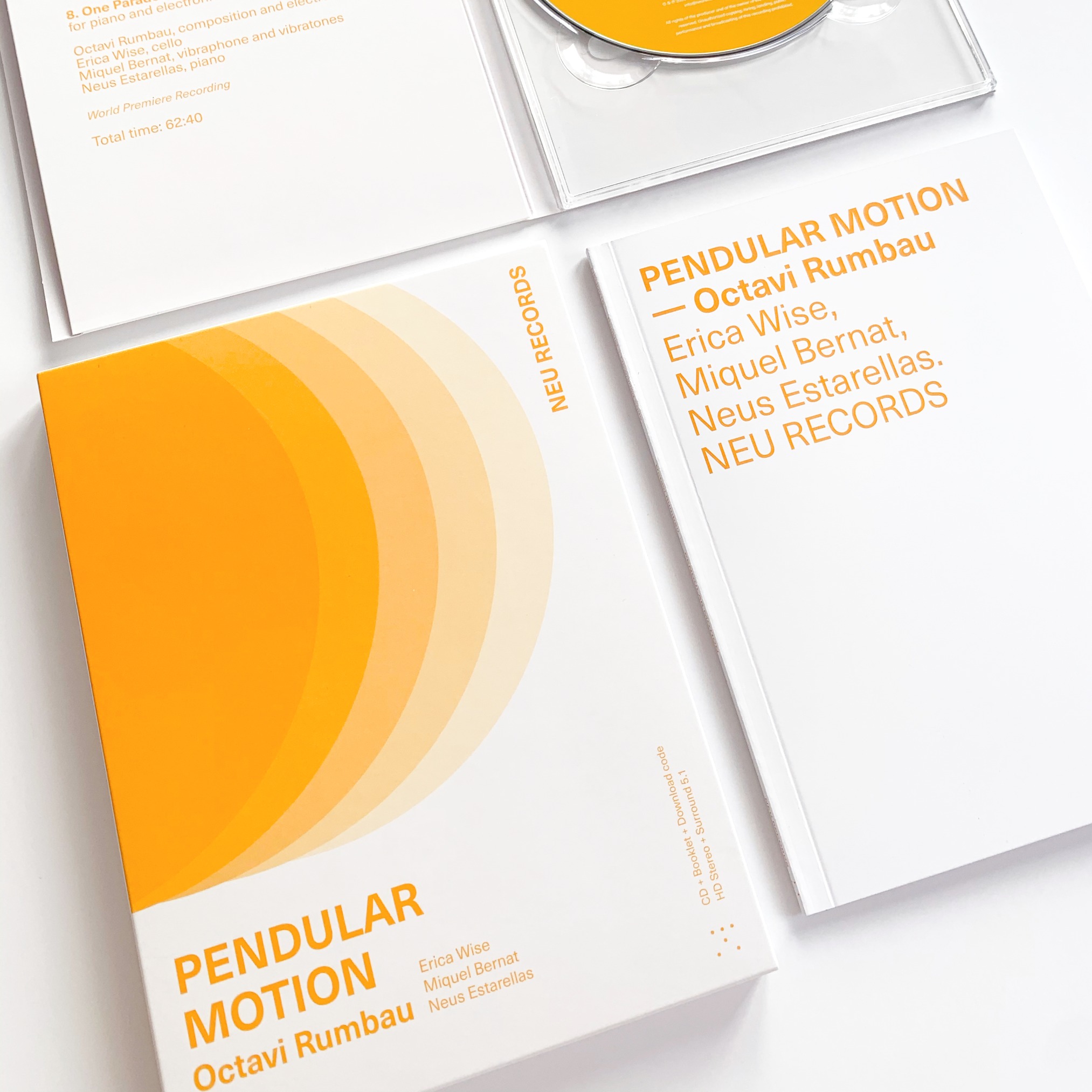
“Fifteen uncoupled simple pendulums of monotonically increasing lengths dance together to produce visual traveling waves, standing waves, beating, and random motion.”
HARVARD NATURAL SCIENCES LECTURE DEMONSTRATIONS
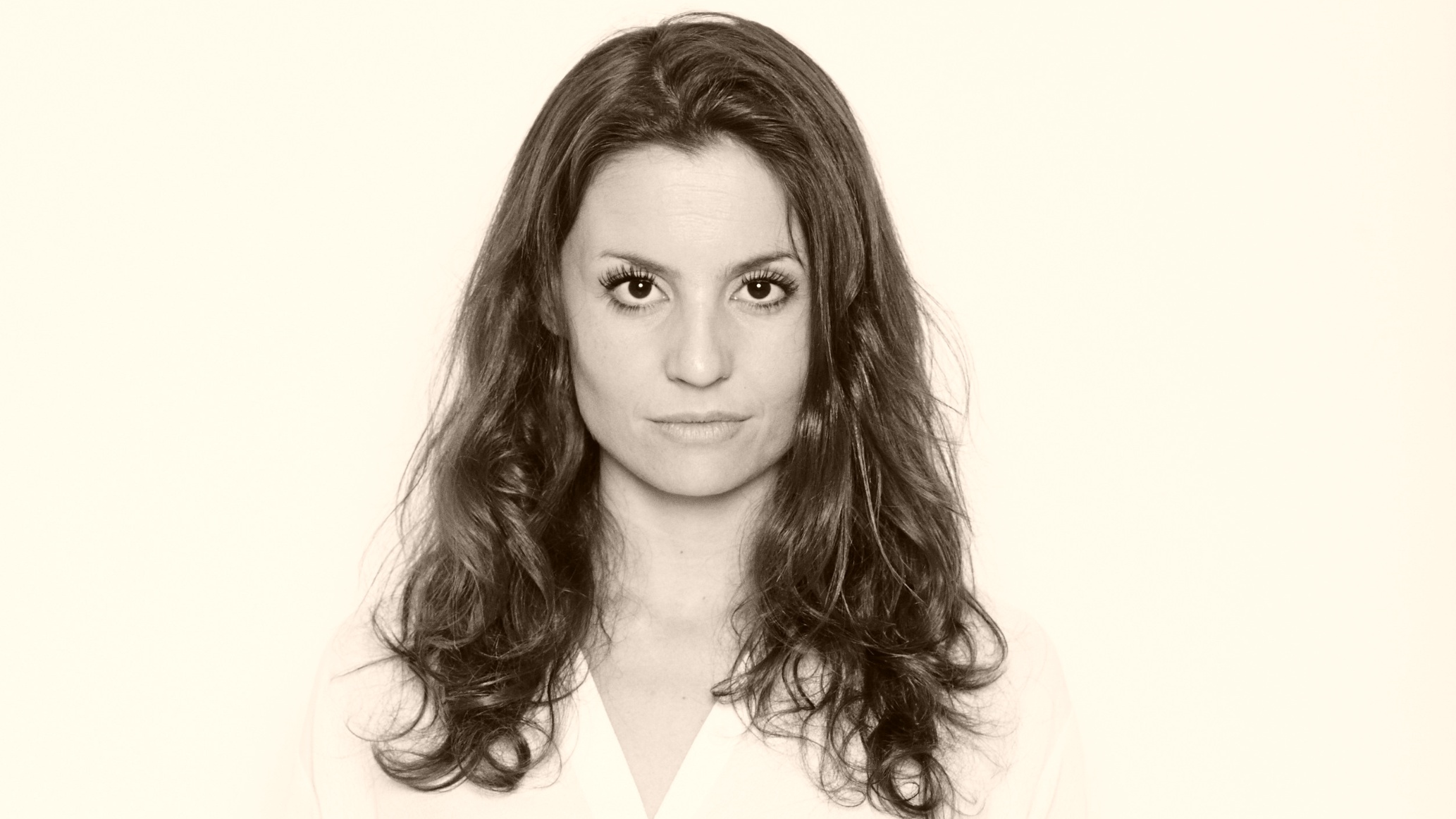
Neus Estarellas
LINER NOTES
The music of Octavi Rumbau exploits the possibility of creating self-generating material from minimal premises. Organically regular patterns proliferate in the form of processes of increasing or decreasing complexity (following the lead of Phases by Steve Reich, or Poème Symphonique for 100 metronomes by György Ligeti) in which certain elements circulate freely within pre-programmed parameters. The perception of time is, indubitably, changed and transformed, released from ends-driven purposes, offering a glimpse of the possibility of a vertical, malleable time. We could say, in fact, that the passage of time and the alteration of perception are the two core elements in Octavi Rumbau’s conception of music.
In a certain way, his music is impregnated with a distilled, abstract idea of a figure’s doubleness: the manipulation of alterity and of the stability of signs and their semantic weight. A playing with otherness –in this case, embodied in kinetic figures– is always disturbing. Altering the loads of content and potentiality of musical signs in order to construct impossible universes –here, of sound– is, in sum, a game with spectra, mirrors and shadows that subvert the possibility of assumptions of knowledge. The composer, like a puppeteer, has at his or her disposal the ability to play with the centre of gravity, whether of matter or sound. And it is the manipulation and fitting into place of this centre from a distance that provides charm, disaffection and, in sum, organicity to the enterprise. Verisimilitude is the phenomenological consequence of this manipulation, and what makes it possible is the string. A string that provides both guidance through the labyrinth and, in its verticality, resistance to gravity and falling. The marionette’s string is the same string as that of the pendulum, which, if we can put it like this, is the most basic, simple and abstract of puppets possible.
Pendular movement is the generating element of the musical journey proposed in this recording. A playing with fundamental concepts such as the centre, weight, movement, trajectory, tension and suspension give shape to a compositional work that is closer to the codes of choreographic installation than to those of a musical exegesis. Mention is inevitable here, as references for possible elaborations of this kinetic universe, of the four hundred pendulums of Nowhere and Everywhere at the Same Time, by William Forsythe, or Pendulum Music, by Steve Reich. What differentiates Octavi Rumbau’s case is the fact that elaborations are embodied as networks of sound algorithms, as a source of forms, processes, materials and textures.
In one of the first interviews with the author, conducted by Albert Torrens and published in the magazine Revista Musical Catalana in 2009, Rumbau states, in relation to Le souk (2009), that «the work’s point of departure is this duality between structure and chaos: the piece passes through a series of processes outlined in broad strokes. At the centre of each of these strokes is an “organism” that acts with its own internal logic, yet without ever leaving aside a sense of the whole.» This concern for the organic mediating nature of duality, ambiguity and paradoxical relationships is a constant, throughout his work: fusion between acoustic sound and electronic sound, between the dynamic and the static, between a deliberate musical gesture and the accidental or fortuitous sound effect. These are the polarities that drive the composer’s research; and his interest in psychoacoustic effects derives naturally from his engagement with these polarities.
The alteration of sonic elements that would normally serve the listener as references, thrust the act of listening into a disconcerting terrain vague, familiar and unknown at the same time, in which indexical utterances (such as here, now, there) become inoperative and are suspended. The paradoxical manipulation of trajectories within the acoustic space produces explosions in the temporal spectrum (as occurs with passing time in the comic book Here, by Richard McGuire, the generative element for It’s time, of 2017) and, equally, results in impossible paths, in concert with what Douglas Hofstadter named “strange loops” in Gödel, Escher, Bach. In a certain way, Rumbau revisits discoveries in sound and psychoacoustic effects from the era of schizophonia and electroacoustics, and manipulates them as aspects of an assimilated musical heritage: the Larsen effect, the phenomenon of acoustic feedback, as the generative element in Étude pour l’effet Larsen (2011), and the Shepard-Risset Illusion (endless glissandi of rising/falling notes or infinite rhythms) for the cycle One paradox (2018-2019).
One paradox 1.0 for electronics (2018) is the first part of a series that combines pendular movement with the psychoacoustic paradox of the endless glissando of Shepard and Risset. The raw simplicity of the electronic sounds distributed in a virtual space of eight loudspeakers (corresponding to eight pendulums) allows perception to focus on the processes generated by oscillation.
One Paradox 2.0 is an adaptation for piano and electronics of the original version, conceived for performance by solo piano and three laptops. The paradox of endless glissando is incorporated equally into the electronics, the solo piano part and the four virtual pianos generated by live electronics. The pendular oscillation facilitates coordination of the sound material as a whole. Two extended versions exist in response to an original video by the artist Guillem Bayo.
Five movements on pendulum motion, for cello, electronics and video (2019), the longest work on the album, presents a solo concert for cello with an octophonic electronic device based on the phenomenon of pendular waves. As an introduction to the piece, the composer quotes from the text of one of the Harvard Natural Sciences Lecture Demonstrations: «Fifteen uncoupled simple pendulums of monotonically increasing lengths dance together to produce visual traveling waves, standing waves, beating, and random motion. One might call this kinetic art and the choreography of the dance of the pendulums is stunning!» This kinetic activation of a pendular choreography is the generating idea of a work in which, as in a baroque suite, each of the five component movements are associated with a different dance. The fourth movement consists of a homage to Cellogram (1971), by James Tenney, one of his Postal pieces developed from ideas of internal canonical structure and of the reproduction of microphones on a large scale (advancing in time, to a good degree, the application of fractal designs to composition) and which, like a Zen koan, is ambiguous and paradoxical.
En suspensió (In suspension) (2019) for vibraphone and electronics is a piece that came out of It’s time, a choreographic and compositional project by Octavi Rumbau with Albert Quesada, Federica Porello and Zoltán Vakulya. If It’s time is an exploration of the fragility of the constituent elements of the temporal present, En suspensió represents the high point in a playing with temporalities that transcend linearity; linearity, the very principle of composition, of placing things in order and of listening, in which acts and deeds are understood as a consequence of previous events. Movement is suspended and indexical elements lose all possible agency. Thus, a tactile space is opened up through a sound space that recovers certain immutable dimensions, where everything combines to form the illusion of an eternal present. Rumbau’s compositional process in creating this illusion –which is, at the same time, completely organic– involves the systematic application of metrical modulation to the maximum possible number of parameters, and their interplay with electronics as a resonant shadow.
Jordi Alomar, musicologist
La música d’Octavi Rumbau explota la capacitat de presentar un material que s’autogenera a partir d’unes premisses mínimes. Unes pautes de regularitat orgànica que acaben proliferant en forma de processos de complexitat creixent o minvant (seguint el deixant de les Phases de Steve Reich, o del Poème symphonique per a 100 metrònoms de György Ligeti), en què certs elements circulen lliurement dins d’uns contorns programats. La percepció del pas del temps resulta, sens dubte, alterada i transmutada, allunyada de la construcció teleològica, i albira la possibilitat d’un temps vertical i mal·leable. De fet, podem dir que el pas del temps i l’alteració de la percepció són els dos elements centrals de la concepció musical d’Octavi Rumbau.
En certa manera, la seva música està impregnada d’una destil·lació i abstracció de la idea del desdoblament de la figura: la manipulació de l’alteritat i de l’estabilitat dels signes i dels seus pesos semàntics. El joc amb l’alteritat -en aquest cas, encarnada en les figures cinètiques- és sempre pertorbador. Alterar les càrregues de contingut i de potencialitat dels signes musicals per bastir universos impossibles -aquí, de naturalesa sonora- és, en definitiva, un joc amb espectres, miralls i ombres que subverteixen les assumpcions del coneixement com a possibilitat. El compositor, igual que el titellaire, té a la seva disposició el joc amb el centre de gravetat, matèric o sonor. I és la manipulació i l’encaix d’aquest centre des de la distància el que atorga gràcia, desafecció i, en definitiva, organicitat a l’escomesa. La versemblança és la conseqüència fenomenològica d’aquesta manipulació, i té en el fil la seva condició de possibilitat. Un fil que és tant la guia a través del laberint com, en la seva verticalitat, la resistència a la gravetat i a la caiguda. El fil de la marioneta és el mateix fil del pèndol, que és, si podem dir-ho així, la més bàsica, senzilla i abstracta de les marionetes possibles.
El moviment pendular és l’element generador del recorregut musical que planteja aquest enregistrament. El joc amb conceptes fonamentals com són el centre, el pes, el moviment, la trajectòria, la tensió i la suspensió dóna forma a un treball compositiu que s’apropa més als codis d’una instal·lació coreogràfica que no pas a una exegesi musical. Resulta inevitable citar els quatre-cents pèndols de Nowhere and everywhere at the same time de William Forsythe, o la Pendulum music de Steve Reich com a referents de possibles projeccions d’aquest univers cinètic. La diferència amb les projeccions d’Octavi Rumbau consisteix en que aquestes s’encarnen en forma de xarxes d’algorismes sonors com a font de formes, processos, materials i textures.
A una de les primeres entrevistes a l’autor, a cura d’Albert Torrens i publicada a la Revista Musical Catalana el 2009, Rumbau afirma, amb relació a Le souk (2009) que «el punt de partida de l’obra és aquesta dualitat entre estructura i caos: la peça transcorre per una sèrie de processos a tall de grans pinzellades. A l’interior de cadascuna trobem un “organisme” que actua amb la seva pròpia lògica interna però sense deixar mai de banda el tot». Aquesta preocupació per la organicitat mediadora de dualitats, d’ambigüitats i de relacions paradoxals és constant al llarg de la seva producció: la fusió entre el so acústic i so electrònic, entre la temporalitat propulsada i l’estatisme, entre el gest musical provocat i l’efecte sonor accidental o fortuït són polaritats que impulsen la recerca. L’interès pels efectes psicoacústics és una derivada natural del joc amb aquestes polaritats.
L’alteració d’elements sonors que poden constituir-se com a referències per a l’oient foragiten l’acte d’escolta cap a un terrain vague desconcertant, familiar i desconegut al mateix temps, en el qual l’aplicació de díctics o expressions indexicals (com aquí, ara, allà) és inoperativa i en suspensió. La manipulació paradoxal de les trajectòries de l’espai acústic provoca explosions en l’espectre temporal (com succeeix al pas del temps en el còmic Here, de Richard McGuire, element generador d’It’s time, de 2017), i també recorreguts impossibles, en sintonia amb el que Douglas Hofstadter va batejar com «bucles estranys» a Gödel, Escher, Bach. En certa manera, Rumbau revisita les troballes dels efectes sonors i psicoacústics de l’època de l’esquizofonia i l’electroacústica, i les manipula com a figures d’un patrimoni musical assimilat: l’efecte Larsen, el fenomen de l’acoblament acústic, com a element generador de l’Étude pour l’effet Larsen (2011), de la mateixa manera que les paradoxes de Shepard i Risset (els glissandi d’altures o de ritmes infinits) ho són per al cicle One paradox (2018-2019).
One paradox 1.0 per a electrònica (2018) és la primera part d’una sèrie que integra el moviment pendular amb la paradoxa psicoacústica del glissando infinit de Shepard i Risset. La simplicitat crua dels sons electrònics distribuïts en un espai virtual de vuit altaveus (corresponents a vuit pènduls) permet centrar la percepció en els processos generats per l’oscil·lació.
One Paradox 2.0 és una adaptació per a piano i electrònica de la versió original, ideada per a ser interpretada per un piano solista i tres laptops. La paradoxa del glissando infinit s’incorpora tant a l’electrònica com a la part de piano solista i als quatre pianos virtuals generats a través d’electrònica en viu. L’oscil·lació pendular articula tot el material sonor. Existeixen dues versions ampliades a partir d’un vídeo original de l’artista Guillem Bayo.
Five movements on pendulum motion, per a violoncel, electrònica i vídeo (2019), l’obra més llarga del disc, planteja un concert solista per a violoncel amb un dispositiu electrònic octofònic basat en el fenomen de les ones pendulars. El compositor cita el text d’una de les Harvard Natural Sciences Lecture Demonstrations com a introducció a la peça: «Quinze pèndols simples de longituds creixents dansen conjuntament i produeixen ones visuals en moviment permanent, ones estacionàries, batiments i moviments aleatoris. Podríem afirmar que es tracta d’art cinètic, i que la coreografia dels pèndols és sorprenent.» Aquesta activació cinètica d’una coreografia pendular és la idea generadora d’un treball que, a la manera de les suites barroques, cada un dels cinc moviments que l’integren s’associa a una dansa distinta. El quart moviment consisteix en un homenatge a Cellogram (1971), de James Tenney, una de les Postal pieces elaborada a partir de les idees d’estructura canònica interna i de reproducció de microformes a gran escala (avançant en el temps, en bona mesura, l’aplicació de dissenys fractals a la composició) i que, com un koan zen, és ambígua i paradoxal.
En suspensió (2019) per a vibràfon i electrònica és una peça sorgida d’It’s time, projecte coreogràfic i musical d’Octavi Rumbau juntament amb Albert Quesada, Federica Porello i Zoltán Vakulya. Si It’s time és una exploració de la fragilitat dels elements constituents del present temporal, En suspensió és el moment de màxim joc amb les temporalitats que transcendeixen la linealitat – el principi de composició, d’ordenació i d’escolta en què els fets són entesos com a conseqüència d’esdeveniments anteriors. El moviment queda suspès i els elements indexicals perden tota funcionalitat possible. S’obre així un espai tàctil a través d’un espai sonor que recobra unes dimensions immutables, on tot configura una il·lusió de present etern. El procediment compositiu amb què treballa Rumbau per crear aquesta il·lusió -tanmateix, completament orgànica- és l’aplicació sistemàtica de la modulació mètrica al màxim de paràmetres possibles, i el joc amb l’electrònica com a ombra ressonant.
Jordi Alomar, musicòleg
La música de Octavi Rumbau explota la capacidad de presentar un material autogenerado a partir de unas premisas mínimas. Unas pautas de regularidad orgánica que proliferan mediante procesos de complejidad creciente o decreciente (siguiendo la estela de las Phases de Steve Reich o del Poème symphonique para 100 metrónomos de György Ligeti), procesos en los que ciertos elementos circulan libremente en unos contornos programados. La percepción del paso del tiempo resulta, sin duda alguna, alterada y transmutada, alejada de la construcción teleológica y permite vislumbrar la posibilidad de un tiempo vertical y maleable. De hecho, podemos afirmar que el paso del tiempo y la alteración de la percepción son los dos elementos centrales en la concepción musical de Octavi Rumbau.
Nos encontramos, en buena medida, ante una música impregnada de una destilación y abstracción de la idea del desdoblamiento de la figura: la manipulación de la condición de ser otro y de la estabilidad de los signos y de sus pesos semánticos. El juego con la alteridad -en este caso, encarnada en las figuras cinéticas- siempre es perturbador. Alterar las cargas de contenido y de potencialidad de los signos musicales para entretejer universos imposibles -aquí, de naturaleza sonora- es, en definitiva, un juego con espectros, espejos y sombras que subvierten lo asumido por el conocimiento como posibilidad. El compositor, igual que el titiritero, tiene a su disposición el juego con el centro de gravedad, matérico o sonoro. Y es la manipulación y el encaje de este centro desde la distancia lo que otorga gracia, desapego y, en definitiva, organicidad al embate.
La verosimilitud es la consecuencia fenomenológica de esta manipulación, y tiene en el hilo su condición de posibilidad. Un hilo que es, a la vez, guía a través del laberinto y resistencia a la gravedad y a la caída, en su verticalidad. El hilo de la marioneta es el mismo hilo del péndulo, que es, si se nos permite la expresión, la más básica, sencilla y abstracta de las marionetas posibles.
El movimiento pendular es el elemento generador del recorrido musical que plantea esta grabación. El juego con conceptos fundamentales como centro, peso, movimiento, trayectoria, tensión o suspensión da forma a un trabajo compositivo que se aproxima más a los códigos de una instalación coreográfica que a los de una exégesis musical. Resulta inevitable citar los cuatrocientos péndulos de Nowhere and everywhere at the same time de William Forythe, o Pendulum music de Steve Reich como referentes de proyecciones posibles de un universo cinético. La diferencia con las proyecciones de Octavi Rumbau consiste en que estas últimas se encarnan en forma de redes de algoritmos sonoros como una fuente de formas, procesos, materiales y texturas.
En una de las primeras entrevistas al autor, de la mano de Albert Torrens y publicada por la Revista Musical Catalana en 2009, Rumbau afirma, en relación a Le souk (2009) que “el punto de partida de la obra es esta dualidad entre estructura y caos: la pieza transcurre por una serie de procesos a modo de grandes pinceladas. En el interior de cada una de ellas encontramos un ‘organismo’ que actúa con su propia lógica interna aunque sin abandonar el todo”. Esta preocupación por la organicidad mediadora de dualidades, de ambigüedades y de relaciones paradójicas es constante a lo largo de su producción: la fusión entre el sonido acústico y el sonido electrónico, entre la temporalidad propulsada y el estatismo, entre el gesto musical provocado y el efecto sonoro accidental o fortuito son polaridades que impulsan la búsqueda. El interés por los efectos psicoacústicos es una bifurcación natural del juego con estas polaridades.
La alteración de elementos sonoros que pueden constituirse como referencias para el oyente expulsa el acto de escucha hacia un terrain vague desconcertante, familiar y desconocido al mismo tiempo, donde la aplicación de deícticos o expresiones indexicales (como aquí, ahora, allí) resulta inoperante y en suspensión. La manipulación paradójica de las trayectorias del espacio acústico provoca explosiones en el espectro temporal (como sucede con el paso del tiempo en el cómic Here, de Richard McGuire, elemento generador de It’s time, de 2017) y también recorridos imposibles, en sintonía con lo que Douglas Hofstadter bautizó como “bucles extraños” en Gödel, Escher, Bach. En cierto modo, Rumbau revisita los hallazgos de los efectos sonoros y psicoacústicos de la época de la esquizofonía y la electroacústica, y los manipula como figuras de un patrimonio musical asimilado: el efecto Larsen, el fenómeno del acoplamiento acústico, como elemento generador de Étude pour l’effet Larsen (2011), así como las paradojas de Shepard y Risset (los glissandi de alturas o ritmos infinitos) lo son para el ciclo One paradox (2018-2019).
One Paradox 1.0 para electrónica (2018) es la primera parte de una serie que integra el movimiento pendular con la paradoja psicoacústica del glissando infinito de Shepard y Risset. La simplicidad cruda de los sonidos electrónicos distribuidos en un espacio virtual de ocho altavoces (correspondientes a ocho péndulos) permite centrar la percepción en los procesos generados por la oscilación.
One Paradox 2.0 es una adaptación para piano y electrónica de la versión original, ideada para ser interpretada por un piano solista y tres ordenadores portátiles. La paradoja del glissando infinito se aplica tanto a la electrónica como a la parte solista y a los cuatro pianos virtuales generados a través de la electrónica en vivo. La oscilación pendular articula todo el material sonoro. Existen dos versiones ampliadas a partir de un video original del artista Guillem Bayo.
Five movements on pendulum motion, para violonchelo, electrónica y video (2019), obra de mayor duración del disco, plantea un concierto solista para violonchelo con un dispositivo electrónico octofónico, basado en el fenómeno de las ondas pendulares. El compositor cita el texto de una de las Harvard Natural Sciences Lecture Demonstrations como introducción a la pieza: “Quince péndulos simples de longitudes crecientes danzan conjuntamente y producen ondas visuales en movimiento permanente, ondas estacionarias, batimientos y movimientos aleatorios. Podríamos afirmar que se trata de un arte cinético, y que la coreografía de los péndulos es sorprendente.” Esta activación cinética de una coreografía pendular es la idea generadora de un trabajo en el que, del mismo modo que en las suites barrocas, cada uno de sus cinco movimientos se asocia a una danza distinta. El cuarto movimiento consiste en un homenaje a Cellogram (1971), de James Tenney, una de las Postal pieces elaborada a partir de las ideas de estructura canónica interna y de reproducción de microformas a gran escala (avanzando, en cierto modo, la aplicación de diseños fractales a la composición) y que, como un koan zen, es ambigua y paradójica.
En suspensió (2019), para vibráfono y electrónica, es una pieza surgida de It’s time, proyecto coreográfico y musical de Octavi Rumbau juntamente con Albert Quesada, Federica Porello y Zoltán Vakulya. Si It’s time es una exploración de la fragilidad de los elementos constitutivos del presente temporal, En suspensió es el momento de máximo juego con las temporalidades que trascienden la linealidad -el principio de composición, de ordenación y de escucha en la que los hechos son entendidos como consecuencia de acontecimientos precedentes. El movimiento queda suspendido y los elementos indexicales pierden cualquier funcionalidad. Se atisba así un espacio táctil a través de un espacio sonoro que recobra unas dimensiones inmutables, donde todo configura una ilusión de presente eterno. El procedimiento compositivo con el que trabaja Rumbau para crear esta ilusión -completamente orgánica- es la aplicación sistemática de la modulación métrica al mayor número de parámetros posible, y el juego con la electrónica como sombra resonante.
Jordi Alomar, musicólogo
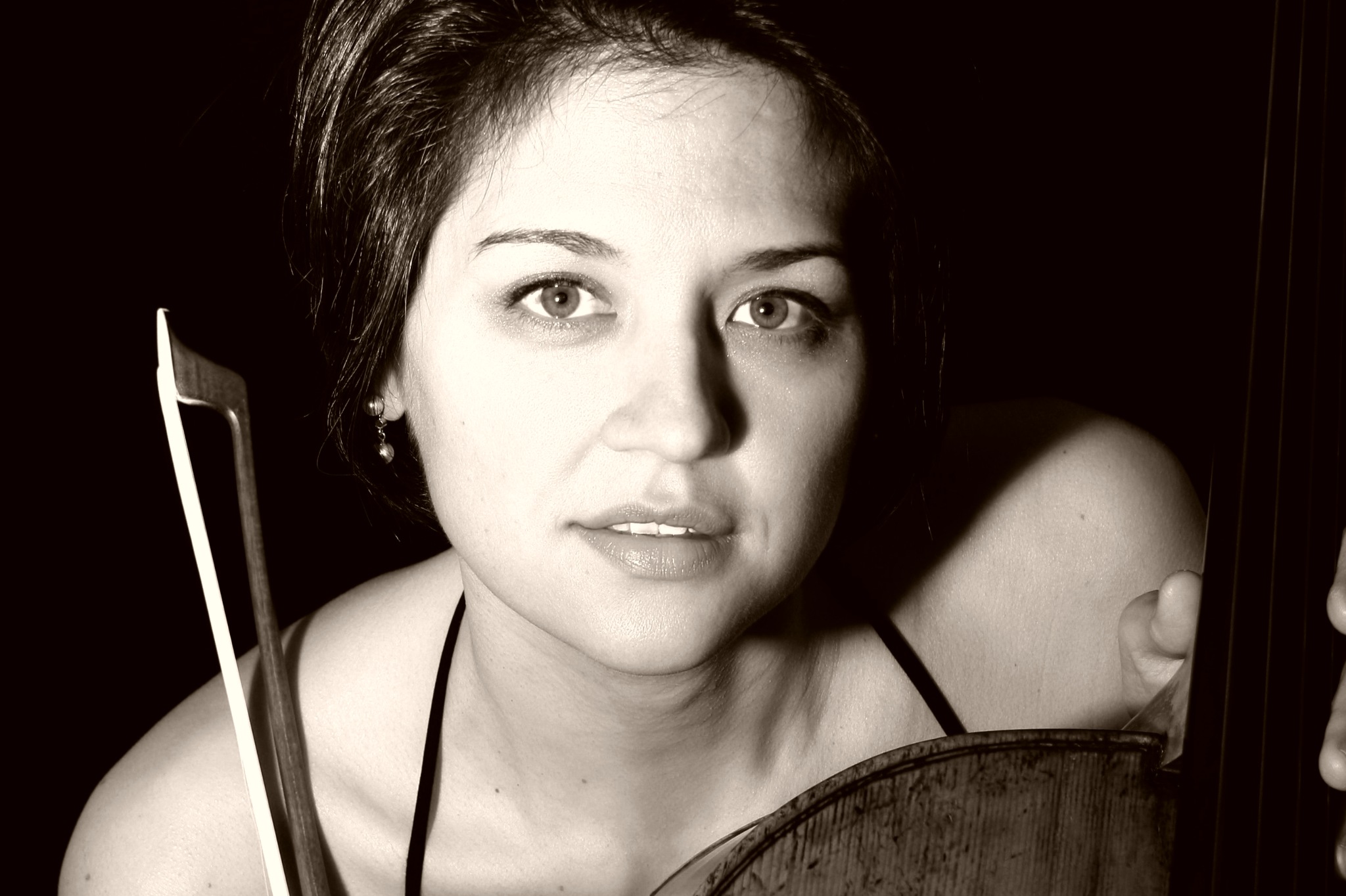
Erica Wise
CREDITS
Recorded at
Auditorio de Zaragoza, Spain
November 2020
Composition and electronics by
Octavi Rumbau
Performed by
Neus Estarellas, piano
Erica Wise, cello
Miquel Bernat, percussion
Music Production and Sound
N Music Production · Santi Barguñó, Hugo Romano Guimarães
Video by
David Mrugala
thedotisblack.com
Liner notes
Jordi Alomar
Graphic Art Direction
Lorena Alonso. Estudio Gerundio
Mixed and mastered with
Dynaudio speakers
Produced by
Santi Barguñó
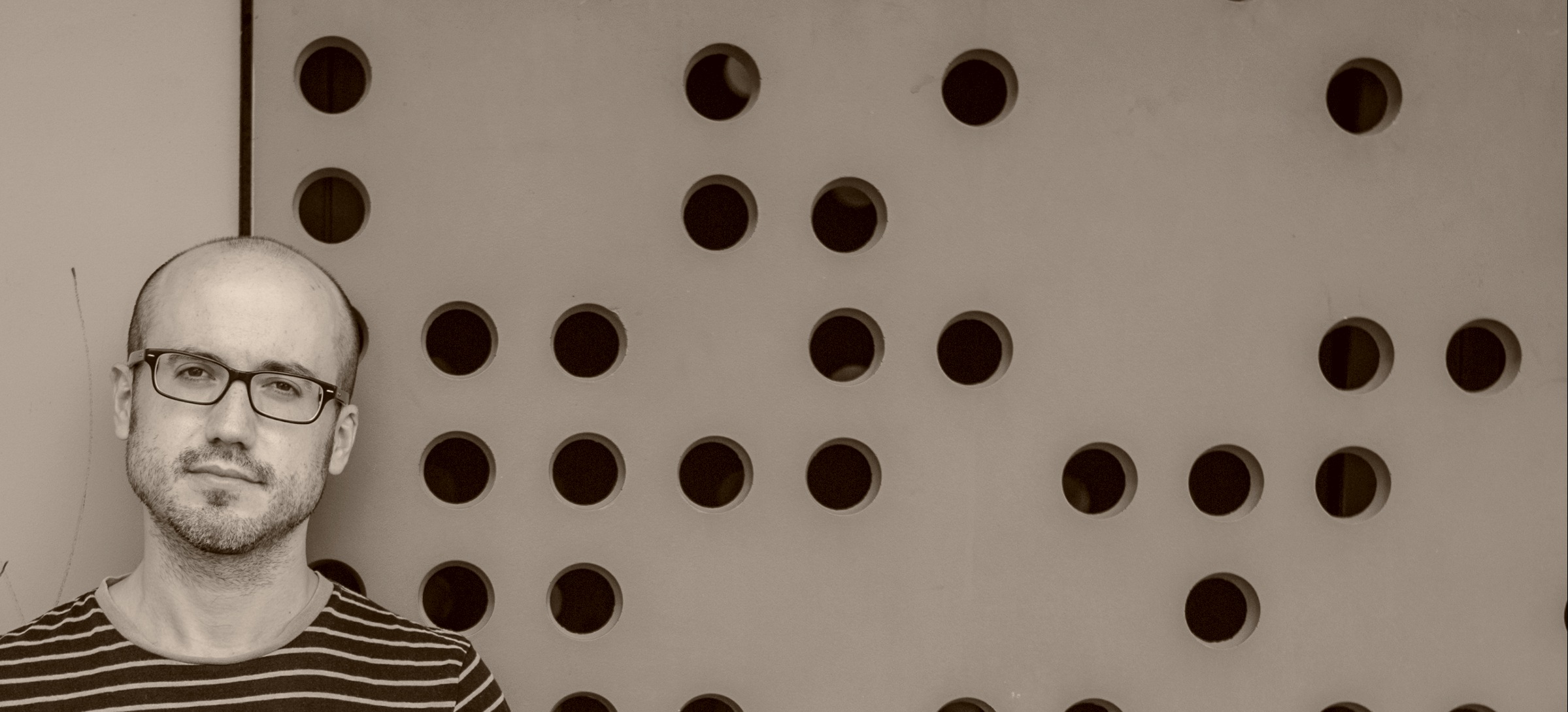
Octavi Rumbau
REVIEWS
“As a listening experience, few releases have had me flitting so quickly back and forth between intense, concentrated focus and simply laughing out loud.” Read here
5AGAINST4, Simon Cummings
“El disco que comentamos tiene un fuerte componente electrónico, pues este medio está presente en todas las obras que figuran en el programa, y muestra una interesante tensión pendular entre orden estricto y caos (…) Five movements on pendulum motion, una pieza para violonchelo y electrónica, con vídeo también en la versión de concierto que funciona como un auténtico concierto para ese instrumento, acompañado por una electrónica basada en el fenómeno de las ondas pendulares y es una obra de envergadura. (…) La calidad de la grabación es muy notable y está hecha con el cuidado y atención que Neu Records pone en sus productos. Una buena ocasión para conocer de primera mano a un compositor que merece ser destacado y para acercarse a una tipología electrónica que se sitúa en otro ámbito de lo que suele ser el estándar de esta materia.”
REVISTA SCHERZO, Tomás Marco
“En aquesta nova obra del compositor barceloní, amb una vasta formació cultural, hi ha ressons dels quatre-cents pèndols del Nowhere and Everywhere at the Same Time (‘Enlloc i a tot arreu alhora’), de William Forsythe, o la Pendulum Music (‘Música del pèndol’), de Steve Reich; posant-hi un bri d’ironia, també hi afegirem el famós pèndol de Fellini. Rumbau, però, va més enllà i organitza el seu material sonor —processos, materials, textures— a partir de xarxes d’algorismes, sempre mantenint latent l’organicitat, un dels conceptes més estimulants de la seva creació.” Read here
